
Standing on the windswept Tibetan plateau, surrounded by an endless expanse of sky and earth, I first glimpsed Mount Kailash. Its silhouette was unlike any mountain I had ever seen—an almost perfect pyramid rising abruptly from the flatlands, its four symmetrical faces sharply etched against the horizon. It felt as if the mountain was not part of the ordinary world but a sacred axis, a cosmic pillar that connected heaven and earth. This was no mere geological formation; this was a mystery to behold, a phenomenon that beckoned with silent power.
The Physical Majesty
Mount Kailash rises to an elevation of 6,638 meters (21,778 feet), modest compared to some Himalayan giants like Everest or K2, yet its prominence is striking. Located in the remote Ngari Prefecture of Tibet, near the borders of India, Nepal, and Bhutan, Kailash stands isolated—no other peaks of comparable height crowd its vicinity. This isolation lends the mountain a singular grandeur, visible from great distances across the barren Tibetan plateau.
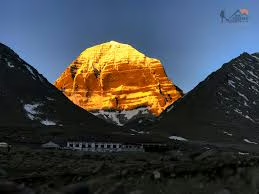
Its shape is the first thing that captures attention: four steep, symmetrical faces rise sharply, meeting at a pointed summit, resembling a perfect pyramid or a giant cosmic mountain etched by divine hands. The sharp ridges and flat faces are unlike the rounded or jagged profiles of most Himalayan peaks. Some geologists believe this striking form is the result of erosion-resistant rock formations that have withstood millions of years of weathering.
Geological Origins: A Puzzle Wrapped in Stone
Scientifically, Mount Kailash is part of the Transhimalaya range, which formed through the immense tectonic collision between the Indian and Eurasian plates. This geological drama, ongoing for tens of millions of years, created the vast Himalayan mountain system, including the Tibetan plateau, the “Roof of the World.”
But Kailash stands apart even in this context. It is composed primarily of granite and other ancient metamorphic rocks, estimated to be over 500 million years old—making it a geological time capsule from a prehistoric era. Unlike the nearby ranges composed mainly of sedimentary rocks, Kailash’s hard granite has resisted erosion, preserving its sharp faces.

A strange geological mystery accompanies the mountain: numerous travelers and researchers report magnetic anomalies in the area. Compasses often spin wildly or behave erratically near Kailash, suggesting the presence of unusual magnetic minerals or fields. While this is scientifically plausible, it adds an aura of enigma to the mountain—an invisible force field that seems to mark it as special, even otherworldly.

The Sacred Landscape: More Than Rock and Ice
But to view Kailash purely through the lens of geology would miss the profound spiritual dimension imbued in this landscape. For millennia, this peak has been revered not just as a mountain but as a sacred presence—an axis mundi, the center of the universe where earthly existence meets the divine.
Pilgrims and monks speak of feeling a palpable energy, a vibration in the air that heightens awareness and brings clarity. The cold mountain winds carry whispered prayers; the barren slopes seem alive with ancient power. It is said that the mountain’s geometry reflects cosmic order, its four faces representing the cardinal directions and the four elements—earth, air, fire, and water—binding nature and spirit.
One’s approach to Kailash is itself a rite of passage. As I drew nearer, the landscape shifted—from rocky outcrops to glistening snowfields and sacred rivers that originate near the peak, nourishing vast regions of Asia. The sacred Manasarovar and Rakshastal lakes lie close by, shimmering mirrors reflecting the mountain’s image and symbolizing purity and transformation.
And now for the jewell :
The Sacred Lakes of Mount Kailash: Manasarovar and Rakshastal — Mirrors of the Divine
As I journeyed closer to Mount Kailash, the landscape revealed two extraordinary lakes resting quietly near its base—Lake Manasarovar and Lake Rakshastal. These lakes, seemingly ordinary at first glance, hold profound significance both geographically and spiritually, creating a sacred constellation around the mountain that enriches the mystery of Kailash.
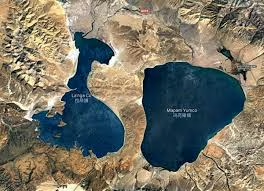
Lake Manasarovar: The Mirror of Purity and Creation
Nestled at an altitude of about 4,590 meters (15,060 feet), Lake Manasarovar is one of the highest freshwater lakes in the world. Its waters are crystal clear, reflecting the sky and the towering peak of Kailash like a giant, tranquil mirror. The lake’s name translates roughly as “Lake of the Mind” or “Lake of the Spirit,” hinting at its association with purity, clarity, and creation.
Legend has it that Lake Manasarovar was born from the divine breath of Lord Brahma, the creator god in Hindu mythology, symbolizing the source of all life. Bathing in its waters is believed to cleanse sins and purify the soul, preparing pilgrims for the spiritual journey around Mount Kailash. This lake’s pristine waters feed into some of Asia’s greatest rivers, including the Brahmaputra and the Indus, linking the sacred mountain to the lifeblood of millions.
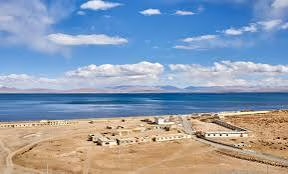
As I stood on the shore, the cool breeze carried the scent of juniper and wildflowers. The lake seemed to breathe, pulsing with a quiet energy that echoed the heartbeat of the mountain. Pilgrims dipped their hands and faces into its waters with reverence, whispering prayers for health, peace, and enlightenment.
Lake Rakshastal: The Dark Twin of Creation
Just a few kilometers from Manasarovar lies Lake Rakshastal, a saltwater lake that contrasts starkly with its freshwater neighbor. Its name means “Lake of the Demon,” and it is often described as the dark, mysterious counterpart to Manasarovar’s purity.
Rakshastal’s waters are salty and lifeless, reflecting an eerie stillness and a deep, shadowy beauty. According to local lore, Rakshastal represents the forces of destruction and chaos, the yin to Manasarovar’s yang. It is associated with the demon king Ravana from Hindu mythology, said to have meditated here and drawn power from the lake’s depths.
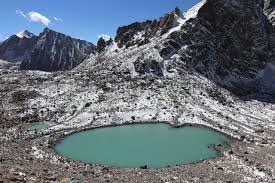
The proximity of these two lakes—the pure and the impure, the light and the dark—embodies the ancient belief in balance and duality. They remind pilgrims and observers that life is a complex interplay of opposing forces, and true spiritual growth requires embracing both.
Twin Jewels at the Foot of the Sacred Mountain
Manasarovar and Rakshastal add profound depth to the phenomenon of Mount Kailash. Together, they create a sacred landscape of contrasts and harmony, purity and power. For pilgrims, these lakes are vital sanctuaries of cleansing and reflection; for seekers like me, they are mirrors reflecting the eternal dance of existence.
The journey to these lakes, framed by the grandeur of Mount Kailash, is a pilgrimage not only across physical terrain but through the layers of myth, spirituality, and inner awakening. It is a journey into the heart of an unexplained wonder that continues to inspire reverence, curiosity, and awe.
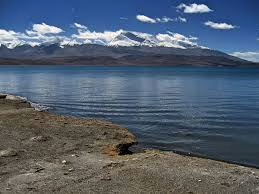
The Mountain That Defies Explanation
Mount Kailash’s geography and geology intertwine with its spiritual essence, creating a phenomenon that defies simple explanation. It is both a marvel of natural forces and a beacon of divine presence. To witness it is to step beyond the boundaries of the ordinary world and into a realm where science and mysticism dance together, revealing a glimpse of the infinite.
As I left the mountain behind, the image of its sharp, silent peak remained etched in my mind—an enduring reminder that some wonders are not merely to be seen but to be felt, experienced, and revered.
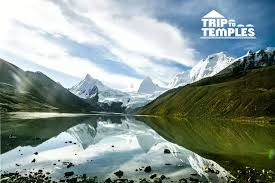
In my dreams, of course 😉
